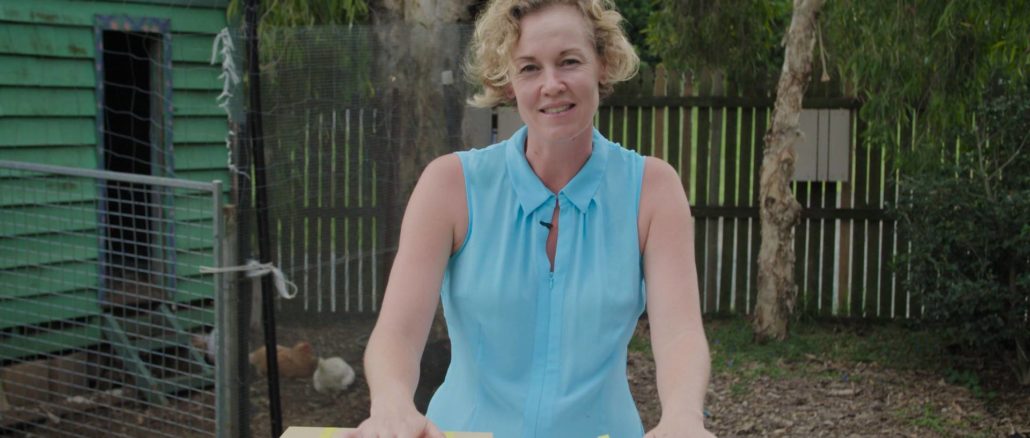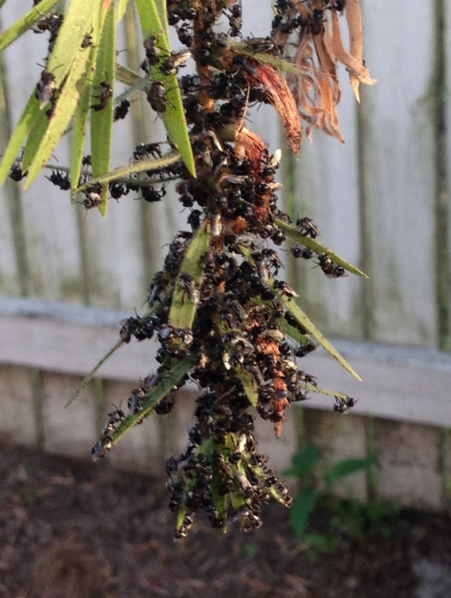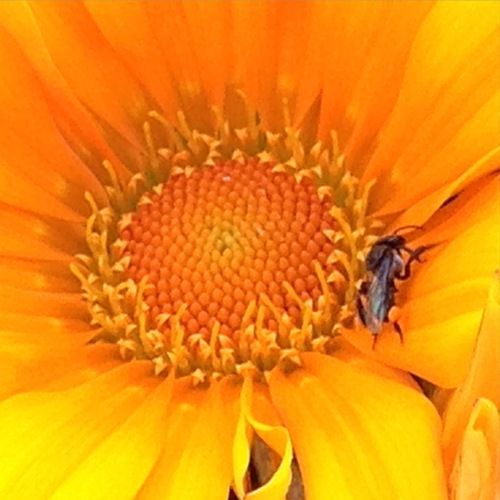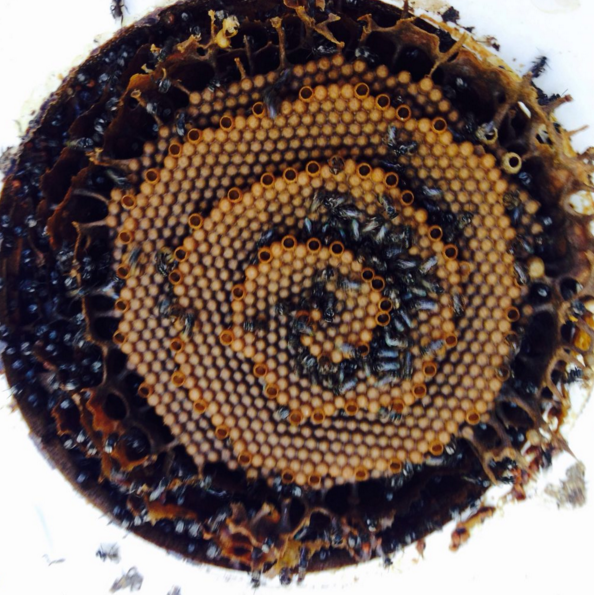
A growing number of Australians are becoming backyard conservationists, thanks to a tiny black native bee with a major stand-out characteristic…..it doesn’t sting.
Colonies of the little insects, which forage up to 500m pollinating flowers, fruit and vegetables while producing citrusy tasting honey with medicinal qualities, are part of a burgeoning new cottage industry.
“What’s great about them is that they are very low maintenance, and being stingless, everyone can interact with them,” said Melissa Ballantyne who has a thriving business selling native bee hives to food and flower producers, schools and suburban households.
“It’s just about keeping them in a good location with not too much sun.”
Melissa, makes and sells the hives (the size of two shoe boxes) all year round.
The hives come with guaranteed after sales service including monitoring and splitting when the time comes.
Melissa said the bees, which were often mistaken for flying ants, were “simply beautiful” to watch as they went about their business in and out of their small hives.
“I have more pictures of bees in my phone than anything else,” she said with a grin.
Indigenous Australians have been harvesting food from the bush for thousands of years, and sugarbag honey from the native bees is a popular form of bush tucker.
Like European bees, native ‘stingless’ bees live in colonies and produce honey from nectar.
But unlike their bigger northern counterparts, their lack of a sting makes harvesting honey simpler, although producers and scientists are still researching the best ways to extract the honey.

Ecologist and native bee researcher Dr Tobias Smith said stingless bees were found in a lot of tropical and sub-tropical parts of Australia [including] New South Wales, Queensland, the Northern Territory and Western Australia.
“They’re generalist foragers and go to all sorts of different plants for pollen and nectar,” said the Queensland researcher whose interests are focused mainly on bee communities in human-dominated landscapes and on the use of native bees as pollinators in crops.
Dr Smith said it was difficult to describe the taste of sugarbag honey.
“It varies quite widely. I would say no two hives are exactly the same, but it’s always fantastic,” he said. Melissa added that it was runnier than European bee honey and “had a citrusy flavour”.
Dr Smith said sugarbag honey also had medicinal qualities.
“We now know that stingless bee honey does have strong anti-microbial qualities, similar and in some cases much better than what we recognise in manuka honey,” he said.
There is a growing commercial market for Australian stingless bee honey, according to Dr Smith and Melissa.
“There’s high demand for it, because not much of it is produced, and it attracts a high price when it is sold. It ranges between about $150 and $250 a kilo,” said Dr Smith.
But he said commercialisation was not without its challenges.
“If a European honey bee keeper has a good year, they might get 40 or 50 litres of honey from one hive … [but] with stingless bees they might get about 1 litre.”
Melissa said she became hooked on native bees after reading The Secret Life of Bees at “Book Club”.
“My Dad, who kept bees when we were younger, said as I had three kids I couldn’t have a hive of stinging bees around them and suggested I try native bees,” she said.
“That’s how I got my first hive and I’m now building and selling hives, with bees, as a full-time job”.

She said there was a growing awareness of native bees, of which there are over 2000 varieties, and it was becoming popular to have them in back gardens and schools.
Melissa visits schools to talk to children about the ecological and fun benefits from owning hives of native bees. Some councils also use her to spread the word in their communities with council-sponsored information sessions.
Producers often rent out hives to fruit and vegetable growers to help pollination of their crops. Research has shown the bees increase the yield on Macadamia trees.
“They are great little pollinators because they are tiny and can get into little nooks and crannies that bigger bees might overlook,” said Melissa.
Another big positive of owning native bee hives, according to her was how they were split into two hives after about 12 months. This allows you to gift one to your neighbour which will kick-start a highway of hives through your suburb.
Melissa’s fascination with native bees led her to getting permission from Sydney’s Taronga Zoo to make a short documentary on the bees targeting children. Melissa also offers instructional videos on how to split your hive, however this is a service that her company offers.
There is so much more to know about bees and contributing to their survival is essential. Bees are crucial to our ecosystem and embracing the native stingless bee in our backyards just seems ‘very Australian’.

To purchase your own hive visit www.sydneystinglessbees.com.au
If you want to know more about the native stingless bee, check out the video here!
Join the colony and follow along on Instagram & Facebook!
SheSociety is a site for the women of Australia to share our stories, our experiences, shared learnings and opportunities to connect.

Leave a Reply